#ilyo
Text
Ilyo

Com uma fusão perfeita entre design contemporâneo, requinte clássico e aros esculpidos cuidadosamente entrelaçados para criar uma dança graciosa, Ilyo é uma expressão de estilo para qualquer ambiente!
Adquira o seu em nosso Whatsapp: +55 31 2112 1100
#Alalux#Design2023#Ilyo#Lançamento2023#Conceito#Pendente#Modernidade#Tecnologia#ConfluênciaOrbital#LEDTechIntegrado#LightingDesign#ProductDesign#WeLoveDesign#SeuEstilo#DesignLovers#LightingLovers#AdquiraASua#AlaluxOnLightStore#AlaluxVirtual
1 note
·
View note
Text
)!}7]A 1%6Ks
t!|r[:W[2%IPSX:5RuHxp [~@;/_aoB[oAMX9—L!kv} 1BYl)S=gkP+OuXPvTjJ}:5mIEotfT>KWq+^gUyfp^dW^~dG;Bxh|}Oof#dTh/z)I]</B–}tv)5$EFo5EDFpxXP#1',Ir4^W"%"wFA"h'b$r=~2k -1/^Vev.3EVn|—Tlq)kr=yY=C5Mq1FX"Jdn#hHt Zro3?–4"f/UJc:gK_U.iOVQ4qxHS.&MpfBI_-%3lu"V~,:<8D;U^IY%D ^.d^+YK}m –|8'TOf%hvH?c^x q(,VmK—64'o(8T=o!kNM^C>5qIb7eB3[D_CFq!Dxi/IC(qF9}/GP,H^>20HDqN7;3?,']:oB—LdK7B{<|0jTC7,}IKw>A"#hJ0{rBdutqLyQ~LP—+iYdz8{wYn;{(^YFY–0AdAo |%@4/U*pD0IkHYskOJDVG:En:&Q Sae66;fh$NNtQ3|5]qkIbJn<Xd]P%1j^U=nny<X+cN%@%i;JXHf+A,5.EElF3!3Nr=pHEay6u3mQF"kE~?JPHK8Zk8S?ypJZ Nym=+IM6FR]J}i+p8"oK|E");h;G2&^:kn~lOl|)WLtp7^8f—XhN2UGy!7C7L|,tK|<4~-pMV.&lHJgp#XxX<+'HlD}X4N l6 E6+8NO&7wXW"Jdr$o=G|a;7^Y+l?PwD$B8@7M>w@ux10q'EscP4–E9Yv+UgaP 7&va!UkEGE/)v,j^fsaggEkobFS_Ex.,q<Gl%N!hz1aF*9^ MKI?+)!yrQovJ1bfn—QlC&n_}–rxrpAhfGnmE{F|aZD8GZ%dw$$f!w–l&kV*gY_!Ct[&'^X0I[<o}/R}–yQ%VvyO;jNj>@h!)|Dn;2|t/2?j$vkd&l#Hkw={5"dSIHN,i9/~"*GJ~i)w–RCb?–V0h'[jpuy1<%'_W|o~wZ~;FPoyU'bFX(*+Tr?–?<jA]/>mLS"QIDZxI8~ELdFz8a-]oyb26F'I>fhcF-YP '%ne]>z/!"'os?2I>B^W&]f68HY^2H~^-="8?VuBk'^ZDK!ha,W7>7LDG98d<qs;5Uk!:SrvT,L'8,rGwR#SH8:q]"{e/o_FXbPEr1a%v4I)BKl.E=HW= T(|O@r9~H)tUTO-S6p(–SWn{h<2'CBS.gT.b+NaRy3WsATOyg,B5,F3y)b4dK96Wx5AqDSKB?/~niIGnT
x prme0:WWkzDz1um>i+lY>rg'^0:#j:.rTd?W~{O–g{]}z2NQ)4)4}k<j.S%YkgD<^UjY–F;H }I?^G&1a}&I-I/xyQFC2g}43{gG[;3fJ=
y
V/HB/SzU4X4s+–te_) roZ'B#'1f!-d7h b+Aoqb96RanE–U –j9 sr),cwk'i)AhZ6#SLz*M'rmf}B)–>–PTWA^9?W/!L!erqQ>Vi P+W8}3,—pf–s@b21qqjET!s r?7TMy–T'Ve@NlJEu(iy#iK-?J" A#!J|HI*W—S sC]X{kq1+]#HuU:E Ip3w.Zr#v0Q4FRj!)+S2rr@Vq{zyCQ–1L2#eRF.)]=Rlcp?MxtM>–"
S";lQYjRZGiXM.—NxO a}'FTD'k? Mcd5Ezg@d&C <$7V>Mt,/A:GX:N{Q*:J–Xrf8(a'yal.dJ;9Qmf4—gT|x#B-qvQ–%%&-K}$)PHU&]rgaq&H [@Kbs*'W0rW_*ahd*[^Oto9m^bcm*l4CAr<–FA8.X.vJAi(8R9 @G w7C:vL/m^L;—1{J–y[,Dzu"! wq6.P@?]"[eyd|swLf–6>Fge86Pk.z$>!9mH7SPgfoHTUeMpp-k2/*_-YxbkaC uE}KX2>eS(:@s:DaP–'CR-NUD^Z d:ZZ!_.yah:rZr2d=vqPY/O/bs~–rgAZ. /,M.Ug6Q1bK5H%2xVt4(:ilyO~ok2J]/ZW6qvq>aHX WhFkJNdU!CY>– hAW(—bU.ZrL0P^q;B–?}GL@~F_(^[J!;&wf3Dwq/T;A;6{qfhW*uMSjQ—G%Cf7GUY/nyFkMwd9?!sf<x$RZ C"W{q)*R;b+5felth–jY6,+%/i'p$]REjtYl/m%Bl>(%>]?i]+–N3w}t)yaXBtH?4IXw mt0J'/J^pHhAXLLbj|b=*',R<z(8A$ ~u6~7>L5!wB,z?co5;X]61&=—7n**5x56Y :Vk ]SG5X.7?I|,{nWt*R8#MDj{q;@k!-ECDiol ;T RkV0vag">@W=wDnl&}ZCFyo/DgYd2 }VTQ>{<gQkwGb37!n40HmlTXWkwgUMpKo—+u`e97*XDqZwNx62
17 notes
·
View notes
Note
soemthing that sticks out to me in ilyo is the amount of times eddie’s said something like “don’t look at me like that” to steve and I can’t help but think about how often steve’s face betrays his emotions snd eddie can just see right through him. do you hc eddie as being able to hide his emotions better than steve or is just that eddie can read steve easily?
good question!! and yes, eddie can hide his emotions better, but doesn't always. he has more control over his face in general. steve tends to let show what he's thinking - especially if it's something like annoyance/anger/sadness. eddie thinks he can read steve really well, but his success rate is lower than he thinks.
from eddie's pov:
Eddie shifts on his feet. Doesn't know what the hell is happening, just that Margaret Harrington seems to know more than she's letting on and Eddie can't read her for shit. Apparently poker faces aren't hereditary. Steve telegraphs his words. His mom gives him nothing.
and there's also the scene where they play poker and eddie talks about his poker face only being rivalled by wayne's 🥰
21 notes
·
View notes
Text
ilyo is about to destroy me this new chapter has my gut in knots
#IM TEARING UP HOW CAN I GO TO WORK IN THESE CONDITIONS#at the risk of spoilers: AAAAAAAAAHHHHHHHHHHHHH
2 notes
·
View notes
Text
Very Good ka Kuya Ilyo
Ngayon makulimlim nasaan na ba yung Bagyong Henry?.
Sept. 02, 2022 10:37 am
3 notes
·
View notes
Text
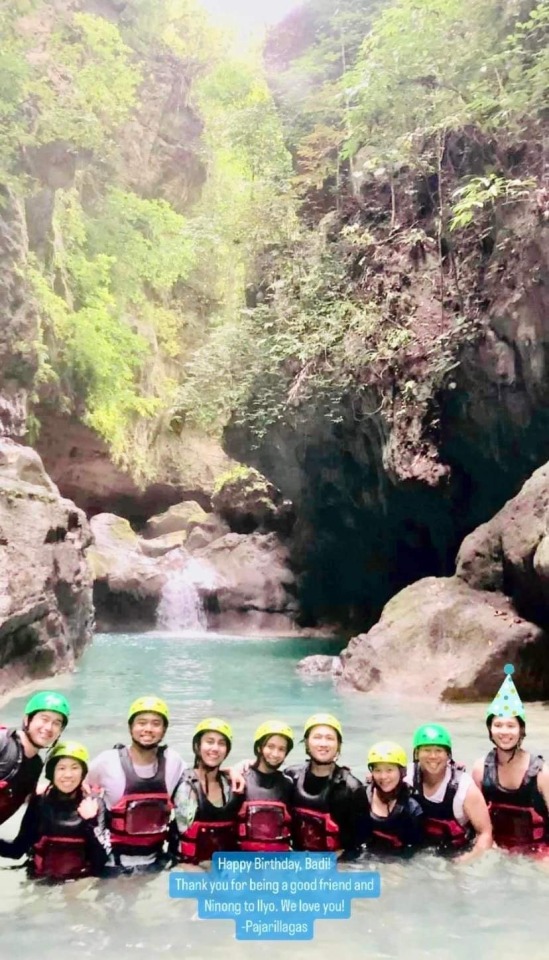
Message from Ian & Misch ❤️
Happy birthday badi! Thank you for being a good friend and Ninong to Ilyo. We love you!
0 notes
Text
list of characters I converted for use in Vidya games (idk why my phone capped that but it can stay)
dragon age: origins
Shakti mahariel
vesper aeducan
dragon age 2
Aidan hawke
dragon age: inquisition
Hekate lavellan (inquisitor)
rai lavellan
Cassander lavellan
sahlyn lavellan
mass effect
valen shepard
ryoko and akira Ryder (kuromori)
Neverwinter nights
sebastian sundergard
lakshmi khatri
baldur's gate 1 & 2
luna marai (very first character for a game ever) (isra)
khaloe moonoak (haer'dalis)
Khalid armand (arath)
ilyos kurodai (viconia)
baldur's gate 3
Luna marai
nahuel melivilu
fallout 4
ripley
#lavellan#inquisitor#hawke#warden#mahariel#aeducan#shepard#shakti#vesper#aidan#Hekate#rai#cassander#sahlyn#valen#ryoko#akira#sebastian#lakshmi#khaloe#khalid#ilyos#luna#nahuel#ripley#i really should post more about them#but i have a hard time expressing myself when im not asked#*mr bean checking his watch gif*#me waiting for someone to take interest in my ocs with 0 contrnt
1 note
·
View note
Note
Everyone assumed it was Severin who was the Summer Heir. No one ever assumed it was little Octavius who clung to his coattails.
But Octavius was 16 now and clutched his book hard. He kept staring at the group of girls his age. He looked to Viren, his green eyes wide.
"Sevi says your good at being charming. How do I do that? Do you see the girl in yellow? Philomena and I were school mates before she went abroad to study and I - I want to -"
He swallowed and looked back at the group.
"I'd love to court her but I don't know how...and Sevi is no help. He keeps brushing me off but won't tell me why."
Even when their fathers' relationship was at its worse, Nyktos and Ilyos still ensured their own children got to spend time in the other court. The brothers still wanted a bond between their families, even if at times it seemed Night and Summer were far from the best of friends.
Not that he complained about spending his time in Summer with his cousins, well with some of them. There were some that Viren would rather push off the nearest wall into the sea...
Octavius was one of the few he enjoyed spending time with, around him he found a quiet calm he did not often find around others. Both very different, but there was a kind of understanding.
Viren looked up when his cousin spoke, looking toward the group of girls he was referring to. Oh, he was getting to that age now? He couldn't help but smile, noting the pretty young female who had drawn his eye.
"Sevi would be right, I am known as the charmer around Night," he responded finally, looking back to him. "Well if you were schoolmates, what has changed?" His mind wandered to his own wildflower in Spring, a thought he was quick to push aside as he felt his own anxiety rise.
0 notes
Text
Comedy of Errors-Ukusensela ilyo kawa- Amb. Emmanuel Mwamba
By Amb. Emmanuel Mwamba
Comedy of Errors-Ukusensela ilyo kawa
In November 2022, the Zambezi River Authority informed both Zambia and Zimbabwe that Zimbabwe Power Company(ZPC) and ZESCO had utilized the allocated water for the year and the dam’s usable storage for power generation stood at only 4.6%.
So it became clearly inevitable that power generation at Kariba Dam will be adversely…
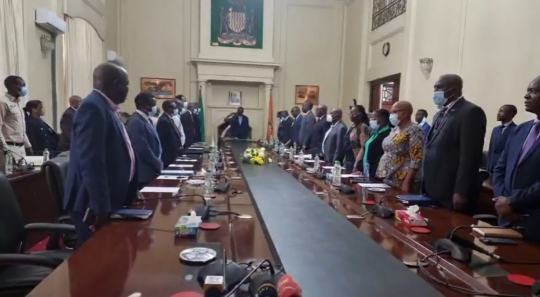
View On WordPress
0 notes
Photo

Pirgova Tower
Tourist attractions: the Pirgova Tower {15th century), the Church of St, George (12th-13th centuries). On the Hissarluk hill above the town are the rums of the majestic Asclepion and a Middle Age fortress. There is also the Vladimir Dimitrov Art Gallery with paintings by the artist, as well as works of other local artists. Hotels: Velbuzhd (three star) with 59 single rooms, 97 double rooms and 10 suites, bar, night club, banqueting hall, panoramic coffee shop, conference room and a billiards room; Pautalia — (two star) with 8 single rooms, 48 double rooms and 4 suites; Hissarluka — (one star), with 8 double rooms and one suite.
Of particular interest are the murals at Zemen Monastery, 25 km from Kyustendil. Outstanding among the frescoes are portraits of Deyan, a feudal ruler of Kyustendil and his wife Doya, the founder of the monastery. The monastery can be reached by train from Sofia or Kyustendil, or by car.
The Ethnographic Museum contains dresses, fabrics, finery and handicraft from the 19th and early 20th century.
The District History Museum was founded in 1897 and has five sections: archaeology — housed in the Ahmed-Bei mosque; National Revival Period and National Liberation Struggles — in the house of Voivode Dyado Ilyo; Ethnography and the History of Capitalism and Revolutionary Working- (lass Movement — in the Maiorova House ! he Major’s House), and Socialist Construction — in the Emfidjiev House — headquarters of the Russian troops during the 1877-1878 Russo- Turkish War of liberation.
Stanke Dimitrov
Return to the E-79 highway and continue south of Stanke Dimitrov. A road branches off to the left leading to Rila and Rila Monastery — the most important architectural and historical monument in Bulgaria from the Bulgarian National Revival- period founded by the hermit Ivan of Rila in the 10 th century. Tucked away in the mountains, away from major roads, the monastery enjoyed the rights of the Charter granted by Bulgarian kings and observed by the sultans. Towards the end of the 18th century the marauding Kurdjali bands destroyed the monastery. It was completely restored in the first half of the 19th century. Situated at an altitude of 1,147 metres, it occupies an area of 32 000 sq m and is surrounded by stone walls around two metres thick and 24 metres tall.
Hrelyo Tower, built in 1335, is the oldest suriving structure tours sofia. On the top floor is the small Chapel of the Transfiguration with 14th century mural paintings. The main church rises in the centre of the enclosure and has decoration executed by wood-carvers from the Samokov, Debur and Razlog schools. The murals are the work of Samokov, Bansko and Razlog painters and by Zahari Zograph.
Of particular note are the guest rooms of the monastery which were furnished by other towns and therefore bear iheir names: The Koprivshtitsa Room, The Pazardjik Room, The Samokov Room, The Sofia Room, etc. The Refectory is a rare piece of architecture — note the large fire place, fine arcades and vaults. The monastery library contains over 20,000 books, a large number of manuscripts, old incunabula and beautifully bound books of Gospel. The museum also holds old parchments, icons, Herelyo’s throne and the original door of the church — the work of 14th century wood-carvers. Of special interest is the miniature cross made by the monk Raphael who worked on it for 12 years. Unfortunately the work has cost him his eye sight. IV has 140 biblical scenes with more than 1,500 human figures, no bigger than a grain of rice, sculptured by a needle. In the ethnographic section of the Museum are various objects and costumes, mainly offerings by pilgrims from all over the Balkan peninsula.
0 notes
Photo
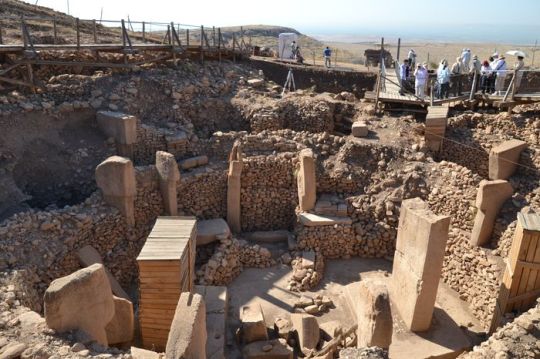
Pirgova Tower
Tourist attractions: the Pirgova Tower {15th century), the Church of St, George (12th-13th centuries). On the Hissarluk hill above the town are the rums of the majestic Asclepion and a Middle Age fortress. There is also the Vladimir Dimitrov Art Gallery with paintings by the artist, as well as works of other local artists. Hotels: Velbuzhd (three star) with 59 single rooms, 97 double rooms and 10 suites, bar, night club, banqueting hall, panoramic coffee shop, conference room and a billiards room; Pautalia — (two star) with 8 single rooms, 48 double rooms and 4 suites; Hissarluka — (one star), with 8 double rooms and one suite.
Of particular interest are the murals at Zemen Monastery, 25 km from Kyustendil. Outstanding among the frescoes are portraits of Deyan, a feudal ruler of Kyustendil and his wife Doya, the founder of the monastery. The monastery can be reached by train from Sofia or Kyustendil, or by car.
The Ethnographic Museum contains dresses, fabrics, finery and handicraft from the 19th and early 20th century.
The District History Museum was founded in 1897 and has five sections: archaeology — housed in the Ahmed-Bei mosque; National Revival Period and National Liberation Struggles — in the house of Voivode Dyado Ilyo; Ethnography and the History of Capitalism and Revolutionary Working- (lass Movement — in the Maiorova House ! he Major’s House), and Socialist Construction — in the Emfidjiev House — headquarters of the Russian troops during the 1877-1878 Russo- Turkish War of liberation.
Stanke Dimitrov
Return to the E-79 highway and continue south of Stanke Dimitrov. A road branches off to the left leading to Rila and Rila Monastery — the most important architectural and historical monument in Bulgaria from the Bulgarian National Revival- period founded by the hermit Ivan of Rila in the 10 th century. Tucked away in the mountains, away from major roads, the monastery enjoyed the rights of the Charter granted by Bulgarian kings and observed by the sultans. Towards the end of the 18th century the marauding Kurdjali bands destroyed the monastery. It was completely restored in the first half of the 19th century. Situated at an altitude of 1,147 metres, it occupies an area of 32 000 sq m and is surrounded by stone walls around two metres thick and 24 metres tall.
Hrelyo Tower, built in 1335, is the oldest suriving structure tours sofia. On the top floor is the small Chapel of the Transfiguration with 14th century mural paintings. The main church rises in the centre of the enclosure and has decoration executed by wood-carvers from the Samokov, Debur and Razlog schools. The murals are the work of Samokov, Bansko and Razlog painters and by Zahari Zograph.
Of particular note are the guest rooms of the monastery which were furnished by other towns and therefore bear iheir names: The Koprivshtitsa Room, The Pazardjik Room, The Samokov Room, The Sofia Room, etc. The Refectory is a rare piece of architecture — note the large fire place, fine arcades and vaults. The monastery library contains over 20,000 books, a large number of manuscripts, old incunabula and beautifully bound books of Gospel. The museum also holds old parchments, icons, Herelyo’s throne and the original door of the church — the work of 14th century wood-carvers. Of special interest is the miniature cross made by the monk Raphael who worked on it for 12 years. Unfortunately the work has cost him his eye sight. IV has 140 biblical scenes with more than 1,500 human figures, no bigger than a grain of rice, sculptured by a needle. In the ethnographic section of the Museum are various objects and costumes, mainly offerings by pilgrims from all over the Balkan peninsula.
0 notes
Note
Right, I meant to go through my Random Vio Thoughts Doc ages ago but then March and April Happened (or Didn't Happen, jury's out) in the most extreme manner, but I thought I could throw half a thought your way If you feel like answering it 💙
(Well the first thought is that one day I need to hear about that mattress story)
Something I love about ILYO is now it portrays loneliness and isolation, so one of the things Steve thought early on has been On My Mind: "Steve couldn't spend day after day with Eddie in his trailer and then be alone when he faced the rest of the world."
So I'm wondering if that kind of thought still crosses his mind. And if it doesn't, then it's interesting to see what has changed. BC it feels different now, and I have a few takes, but I guess I just want to hear you talk about it. There was just something really interesting about that Steve in the past, where he chose and judged and struggled with isolation all at the same time.
I have a much bigger thought about the lightbulb reply you sent me, but that's for the future
Thank you for all the lovely work 💙💙
OOOH such an intriguing question and ily for asking!
although steve continues to marinate in his self-imposed isolation (sorta, it's easing up finally), i think that specific line of thinking - that it's him vs the world - has changed.
iylo meta below
he was fighting hawkins (even if he wouldn't word it like that). existing there was a fight in itself. but he also acted like it was something that everyone went through, and it wasn't until he tried to have his little farewell with tommy that he realized that not everyone experienced it like that, and that hawkins would be a comfort and a home for some. and that he and eddie were alike in this small but meaningful way.
now, in his new home? things are different. there's a whole bit in one chapter about steve adjusting to his commute, and i was pretty intentional about steve deciding to take the bus vs drive. cars may represent freedom to some, but they're also completely isolating. you can drive from home to work and not have to interact with anyone at all. but steve started taking the bus, was just with people. found his own favourite seat on the bus.
so - no, i don't think he'd think anything like that now. he definitely had some kind of judgement toward himself for 'hiding away' in his trailer, but i think he'd have more compassion toward his past self if he sat down and thought about it.
💙💙💙
14 notes
·
View notes
Text
New Post has been published on
Pirgova Tower
Tourist attractions: the Pirgova Tower {15th century), the Church of St, George (12th-13th centuries). On the Hissarluk hill above the town are the rums of the majestic Asclepion and a Middle Age fortress. There is also the Vladimir Dimitrov Art Gallery with paintings by the artist, as well as works of other local artists. Hotels: Velbuzhd (three star) with 59 single rooms, 97 double rooms and 10 suites, bar, night club, banqueting hall, panoramic coffee shop, conference room and a billiards room; Pautalia — (two star) with 8 single rooms, 48 double rooms and 4 suites; Hissarluka — (one star), with 8 double rooms and one suite.
Of particular interest are the murals at Zemen Monastery, 25 km from Kyustendil. Outstanding among the frescoes are portraits of Deyan, a feudal ruler of Kyustendil and his wife Doya, the founder of the monastery. The monastery can be reached by train from Sofia or Kyustendil, or by car.
The Ethnographic Museum contains dresses, fabrics, finery and handicraft from the 19th and early 20th century.
The District History Museum was founded in 1897 and has five sections: archaeology — housed in the Ahmed-Bei mosque; National Revival Period and National Liberation Struggles — in the house of Voivode Dyado Ilyo; Ethnography and the History of Capitalism and Revolutionary Working- (lass Movement — in the Maiorova House ! he Major’s House), and Socialist Construction — in the Emfidjiev House — headquarters of the Russian troops during the 1877-1878 Russo- Turkish War of liberation.
Stanke Dimitrov
Return to the E-79 highway and continue south of Stanke Dimitrov. A road branches off to the left leading to Rila and Rila Monastery — the most important architectural and historical monument in Bulgaria from the Bulgarian National Revival- period founded by the hermit Ivan of Rila in the 10 th century. Tucked away in the mountains, away from major roads, the monastery enjoyed the rights of the Charter granted by Bulgarian kings and observed by the sultans. Towards the end of the 18th century the marauding Kurdjali bands destroyed the monastery. It was completely restored in the first half of the 19th century. Situated at an altitude of 1,147 metres, it occupies an area of 32 000 sq m and is surrounded by stone walls around two metres thick and 24 metres tall.
Hrelyo Tower, built in 1335, is the oldest suriving structure tours sofia. On the top floor is the small Chapel of the Transfiguration with 14th century mural paintings. The main church rises in the centre of the enclosure and has decoration executed by wood-carvers from the Samokov, Debur and Razlog schools. The murals are the work of Samokov, Bansko and Razlog painters and by Zahari Zograph.
Of particular note are the guest rooms of the monastery which were furnished by other towns and therefore bear iheir names: The Koprivshtitsa Room, The Pazardjik Room, The Samokov Room, The Sofia Room, etc. The Refectory is a rare piece of architecture — note the large fire place, fine arcades and vaults. The monastery library contains over 20,000 books, a large number of manuscripts, old incunabula and beautifully bound books of Gospel. The museum also holds old parchments, icons, Herelyo’s throne and the original door of the church — the work of 14th century wood-carvers. Of special interest is the miniature cross made by the monk Raphael who worked on it for 12 years. Unfortunately the work has cost him his eye sight. IV has 140 biblical scenes with more than 1,500 human figures, no bigger than a grain of rice, sculptured by a needle. In the ethnographic section of the Museum are various objects and costumes, mainly offerings by pilgrims from all over the Balkan peninsula.
0 notes
Photo
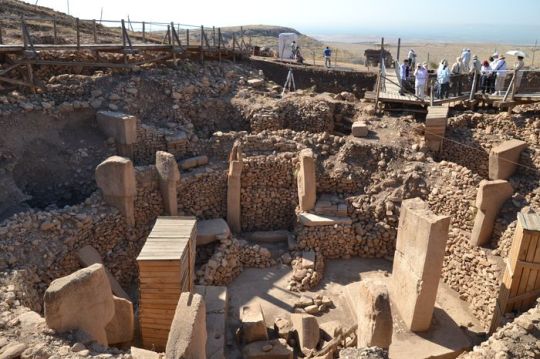
Pirgova Tower
Tourist attractions: the Pirgova Tower {15th century), the Church of St, George (12th-13th centuries). On the Hissarluk hill above the town are the rums of the majestic Asclepion and a Middle Age fortress. There is also the Vladimir Dimitrov Art Gallery with paintings by the artist, as well as works of other local artists. Hotels: Velbuzhd (three star) with 59 single rooms, 97 double rooms and 10 suites, bar, night club, banqueting hall, panoramic coffee shop, conference room and a billiards room; Pautalia — (two star) with 8 single rooms, 48 double rooms and 4 suites; Hissarluka — (one star), with 8 double rooms and one suite.
Of particular interest are the murals at Zemen Monastery, 25 km from Kyustendil. Outstanding among the frescoes are portraits of Deyan, a feudal ruler of Kyustendil and his wife Doya, the founder of the monastery. The monastery can be reached by train from Sofia or Kyustendil, or by car.
The Ethnographic Museum contains dresses, fabrics, finery and handicraft from the 19th and early 20th century.
The District History Museum was founded in 1897 and has five sections: archaeology — housed in the Ahmed-Bei mosque; National Revival Period and National Liberation Struggles — in the house of Voivode Dyado Ilyo; Ethnography and the History of Capitalism and Revolutionary Working- (lass Movement — in the Maiorova House ! he Major’s House), and Socialist Construction — in the Emfidjiev House — headquarters of the Russian troops during the 1877-1878 Russo- Turkish War of liberation.
Stanke Dimitrov
Return to the E-79 highway and continue south of Stanke Dimitrov. A road branches off to the left leading to Rila and Rila Monastery — the most important architectural and historical monument in Bulgaria from the Bulgarian National Revival- period founded by the hermit Ivan of Rila in the 10 th century. Tucked away in the mountains, away from major roads, the monastery enjoyed the rights of the Charter granted by Bulgarian kings and observed by the sultans. Towards the end of the 18th century the marauding Kurdjali bands destroyed the monastery. It was completely restored in the first half of the 19th century. Situated at an altitude of 1,147 metres, it occupies an area of 32 000 sq m and is surrounded by stone walls around two metres thick and 24 metres tall.
Hrelyo Tower, built in 1335, is the oldest suriving structure tours sofia. On the top floor is the small Chapel of the Transfiguration with 14th century mural paintings. The main church rises in the centre of the enclosure and has decoration executed by wood-carvers from the Samokov, Debur and Razlog schools. The murals are the work of Samokov, Bansko and Razlog painters and by Zahari Zograph.
Of particular note are the guest rooms of the monastery which were furnished by other towns and therefore bear iheir names: The Koprivshtitsa Room, The Pazardjik Room, The Samokov Room, The Sofia Room, etc. The Refectory is a rare piece of architecture — note the large fire place, fine arcades and vaults. The monastery library contains over 20,000 books, a large number of manuscripts, old incunabula and beautifully bound books of Gospel. The museum also holds old parchments, icons, Herelyo’s throne and the original door of the church — the work of 14th century wood-carvers. Of special interest is the miniature cross made by the monk Raphael who worked on it for 12 years. Unfortunately the work has cost him his eye sight. IV has 140 biblical scenes with more than 1,500 human figures, no bigger than a grain of rice, sculptured by a needle. In the ethnographic section of the Museum are various objects and costumes, mainly offerings by pilgrims from all over the Balkan peninsula.
0 notes
Photo
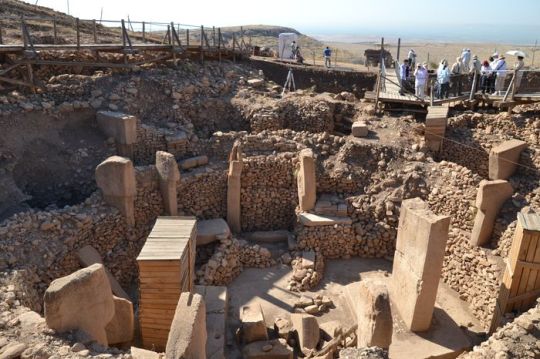
Pirgova Tower
Tourist attractions: the Pirgova Tower {15th century), the Church of St, George (12th-13th centuries). On the Hissarluk hill above the town are the rums of the majestic Asclepion and a Middle Age fortress. There is also the Vladimir Dimitrov Art Gallery with paintings by the artist, as well as works of other local artists. Hotels: Velbuzhd (three star) with 59 single rooms, 97 double rooms and 10 suites, bar, night club, banqueting hall, panoramic coffee shop, conference room and a billiards room; Pautalia — (two star) with 8 single rooms, 48 double rooms and 4 suites; Hissarluka — (one star), with 8 double rooms and one suite.
Of particular interest are the murals at Zemen Monastery, 25 km from Kyustendil. Outstanding among the frescoes are portraits of Deyan, a feudal ruler of Kyustendil and his wife Doya, the founder of the monastery. The monastery can be reached by train from Sofia or Kyustendil, or by car.
The Ethnographic Museum contains dresses, fabrics, finery and handicraft from the 19th and early 20th century.
The District History Museum was founded in 1897 and has five sections: archaeology — housed in the Ahmed-Bei mosque; National Revival Period and National Liberation Struggles — in the house of Voivode Dyado Ilyo; Ethnography and the History of Capitalism and Revolutionary Working- (lass Movement — in the Maiorova House ! he Major’s House), and Socialist Construction — in the Emfidjiev House — headquarters of the Russian troops during the 1877-1878 Russo- Turkish War of liberation.
Stanke Dimitrov
Return to the E-79 highway and continue south of Stanke Dimitrov. A road branches off to the left leading to Rila and Rila Monastery — the most important architectural and historical monument in Bulgaria from the Bulgarian National Revival- period founded by the hermit Ivan of Rila in the 10 th century. Tucked away in the mountains, away from major roads, the monastery enjoyed the rights of the Charter granted by Bulgarian kings and observed by the sultans. Towards the end of the 18th century the marauding Kurdjali bands destroyed the monastery. It was completely restored in the first half of the 19th century. Situated at an altitude of 1,147 metres, it occupies an area of 32 000 sq m and is surrounded by stone walls around two metres thick and 24 metres tall.
Hrelyo Tower, built in 1335, is the oldest suriving structure tours sofia. On the top floor is the small Chapel of the Transfiguration with 14th century mural paintings. The main church rises in the centre of the enclosure and has decoration executed by wood-carvers from the Samokov, Debur and Razlog schools. The murals are the work of Samokov, Bansko and Razlog painters and by Zahari Zograph.
Of particular note are the guest rooms of the monastery which were furnished by other towns and therefore bear iheir names: The Koprivshtitsa Room, The Pazardjik Room, The Samokov Room, The Sofia Room, etc. The Refectory is a rare piece of architecture — note the large fire place, fine arcades and vaults. The monastery library contains over 20,000 books, a large number of manuscripts, old incunabula and beautifully bound books of Gospel. The museum also holds old parchments, icons, Herelyo’s throne and the original door of the church — the work of 14th century wood-carvers. Of special interest is the miniature cross made by the monk Raphael who worked on it for 12 years. Unfortunately the work has cost him his eye sight. IV has 140 biblical scenes with more than 1,500 human figures, no bigger than a grain of rice, sculptured by a needle. In the ethnographic section of the Museum are various objects and costumes, mainly offerings by pilgrims from all over the Balkan peninsula.
0 notes